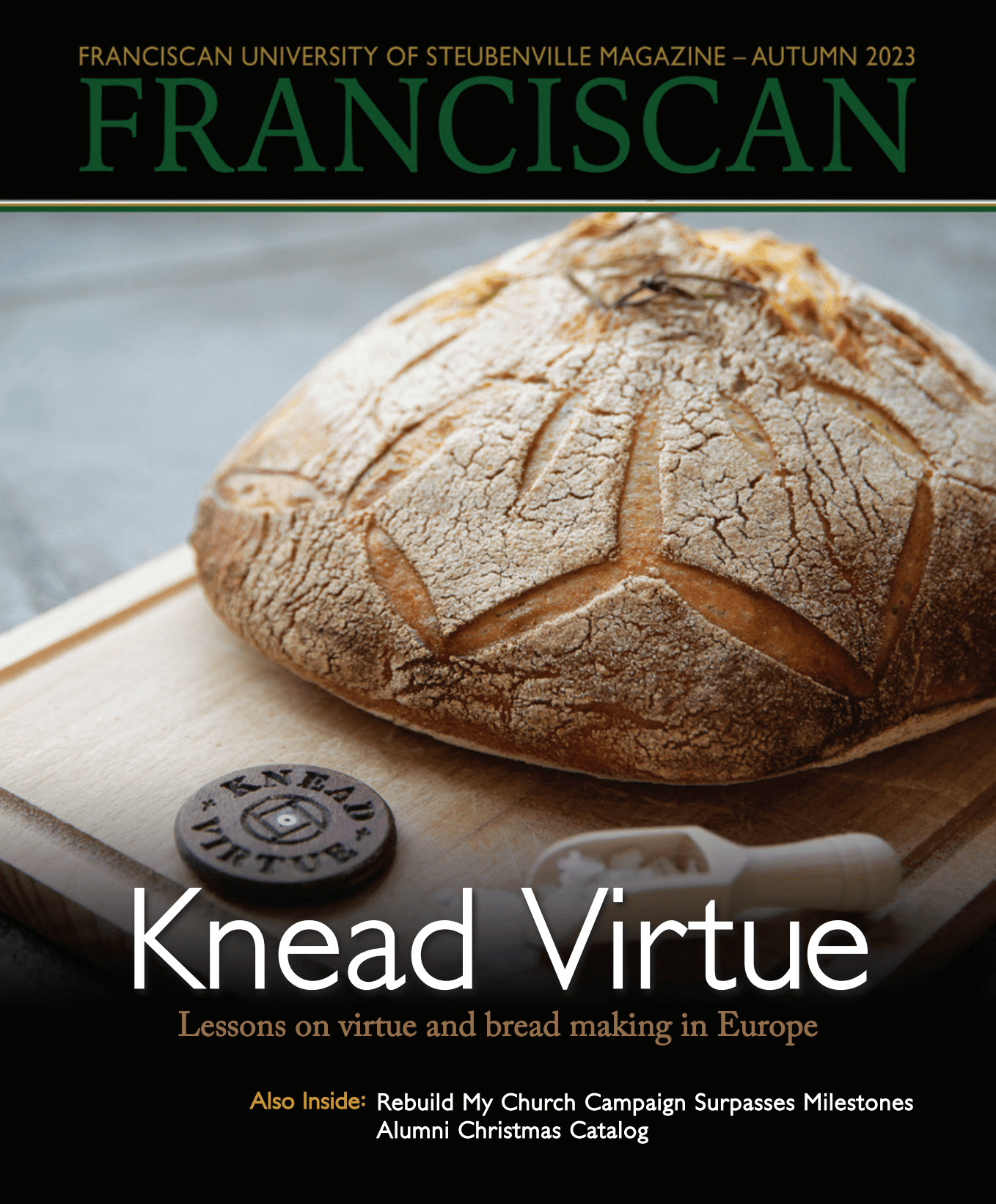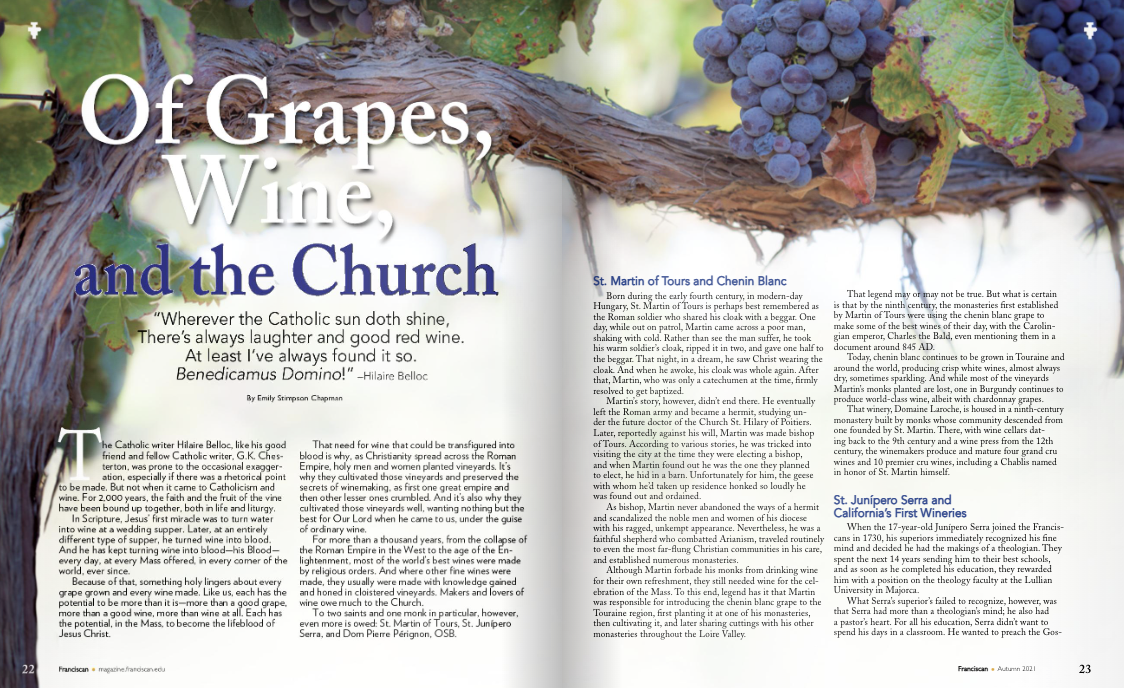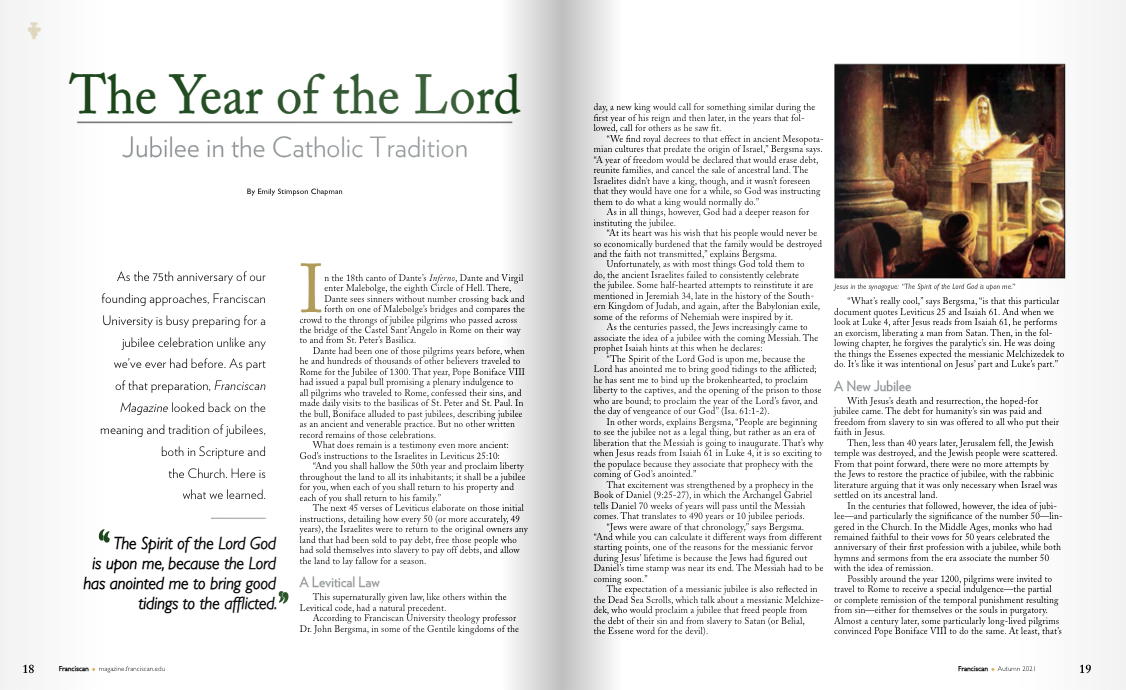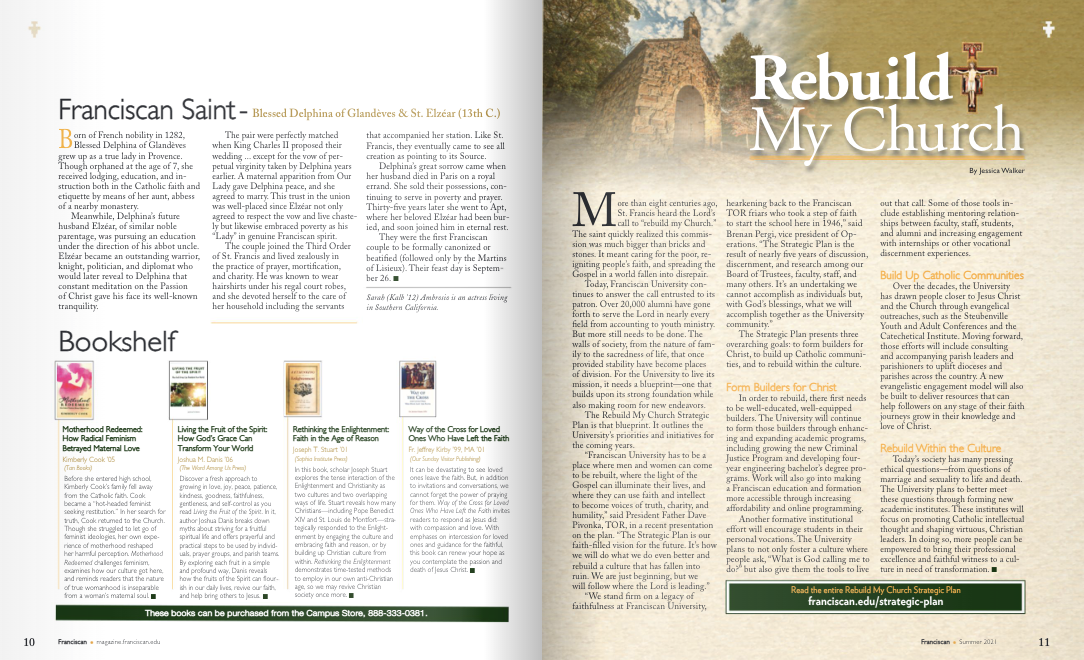Cory Heimann’s children couldn’t get enough of interactive books. However, he felt many of those books lack meaning. Heimann ’10, creative director at video production and marketing company Likable Art, felt inspired to put a Catholic spin on an interactive book. He pulled together a team of poet- and illustrator-friends to assist him, raising funds on Kickstarter to self-publish Light of the Saints, a book about saints, whose miracles appear when the reader shines a light behind the pages.
“We sold out the first run pretty much as soon as we launched,” says the father of five boys, aged 10 months to 10 years old. “We did a second run published by Word on Fire.”
When Heimann first brought the book home, his 10-year-old sat in a corner, studying its pages and secret images revealed by light. Closing the cover, he said, “It’s pretty darn good, Dad.” His 4-year-old son, however, remains his biggest fan, asking Heimann to read the book to him often.
Other Franciscan University graduates, former students, and faculty are also making waves in the Catholic children’s book market. Along with Heimann, Franciscan Magazine spoke with Emily Stimpson Chapman, Maura Roan McKeegan, and Dr. Scott Hahn about the importance of Catholic children’s literature, what makes a story attractive, and why the Catholic children’s book market is growing exponentially.
The Importance of Good Catholic Children’s Literature
Best-selling Catholic author Emily Stimpson Chapman co-authored two books with Dr. Scott Hahn: Mary, Mother of All and The Supper of the Lamb (Emmaus Road Publishing, 2023). She is currently writing a children’s Bible for Word on Fire. Both Chapman and Hahn believe good children’s literature informs the mind and the imagination. Their children’s books are epic poetry telling the story of salvation history.
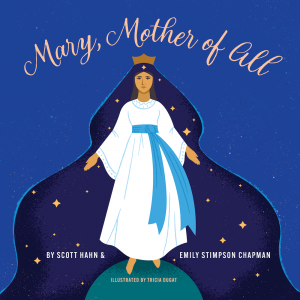
“It’s important for our children from an early age to learn about the rich history they have as Catholics,” Chapman says. “I think making our stories about salvation history lyrical, in good rhyming poetry with the correct meter, helps the stories sink more deeply into children’s heads and hearts.”
Hahn adds, “We wanted to find ways to translate the mysteries of faith in a manner that will excite the imagination and plant the seeds about the Holy Eucharist, the Blessed Virgin, and the saints.”
Exceptional children’s stories not only captivate children, argues Hahn, a grandfather with 21 grandchildren aged 15 and younger; they also provide opportunities for strengthening intergenerational bonds.
Like Hahn, 12-time children’s author Maura Roan McKeegan—who also co-authored the award-winning children’s book Seven Clues: A Catholic Treasure Hunt with Hahn—believes reading aloud to children creates happy memories. She’s a proponent of illustrated books because they reach people’s hearts regardless of age.
“Beautiful and meaningful picture books are a path to heaven, not only in their content but also in the way they draw adults and children together to read them,” she says. “They create deep impressions of wonder and delight, and those positive feelings become linked with the faith for a lifetime.”
What Makes a Good Story?
“The best books reach our hearts by reflecting our authentic human experience—from humor to suffering, from sorrow to joy,” McKeegan posits.
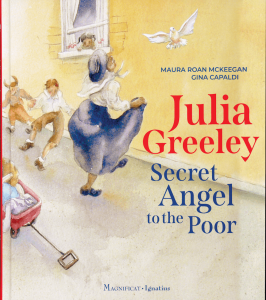
Her recent children’s book, Julia Greeley: Secret Angel to the Poor (Magnificat-Ignatius, 2022), portrays the tremendous love of the former slave and Catholic-convert Julia Greeley in the face of great suffering and unwavering devotion to the Sacred Heart of Jesus. McKeegan felt called to write a story about Greeley, recognized as a servant of God in 2016, because of her childlike heart, incredible generosity, and ability to forgive when faced with terrible injustices.
Books like Julia Greeley live in children’s minds and provide vivid saintly role models to emulate.
Another aspect of an engaging story is beautiful language with a clear message that doesn’t talk down to the child. Chapman thinks elevated language is vital to forming a child’s mind and heart, and that too many children’s books use dumbed-down language. McKeegan agrees, noting that in the world of children’s literature, there have always been “weeds and wheat.”
“The shelves in the library and in the bookstore are a mirror of the world we live in. When we focus on cultivating the wheat, we can help it grow,” she offers.
In addition to artful language, Heimann—who’s wrapping up his second book, Light of the Sacraments (Word on Fire, 2024)—recommends short, meaningful messages: “A story that meets them where they’re at and then takes them somewhere deeper.”
Glimpses of the spiritual world are also critical to high-quality Catholic literature. Mentioning the supernatural and spiritual realities helps children to begin to understand there’s a constant spiritual battle waging. Chapman notes how her 5-, 3-, and 2-year-olds like it when angels and demons are part of the narrative.
“You want the words to get in the child’s soul, and you want the pictures to form their imagination,” she says. “Together, the truth and beauty can help form the child toward goodness.”
Growing Catholic Children’s Book Market
Hahn, Emmaus Road Publishing’s editor in chief, says the Catholic children’s book market has grown significantly in recent years. One reason is that parents notice a disparity between what they see on TV and in public schools and libraries compared to how they want to live their lives and how they want their children to grow up.
“I think this [decline in secular culture] has renewed and perhaps even intensified the desire of Catholic parents and grandparents to find suitable reading materials,” Hahn says. “But it’s also what has motivated a lot of Catholic writers and illustrators [to create children’s lit].”
Chapman thinks millennial moms and Catholic grandparents are driving the market.
“The culture is virulently anti-Catholic—anti-Christian—so they’re trying to raise children Catholic in a culture that is not only not helping them but is working against them,” she says. “I think they’re looking for all the help they can get.”
Grandparents often buy Catholic books for their grandchildren to evangelize and catechize.
Catholic grandparents and young parents alike recognize they must behave intentionally when handing down theology. Looking at Mass attendance as one example—Gallup reports 39 percent weekly Mass attendance compared to 75 percent in 1955—it’s clear parents have to do more if they want their children to grow up as faithful Catholics.
Great Catholic children’s books help dispel the dark shadow cast by a confused culture, Hahn says, adding, “You can encourage the darkness or turn on the lights. And I think that’s what Catholic children’s book authors have found—many light switches to flip on.”
Lori Hadacek Chaplin writes from Idaho.




